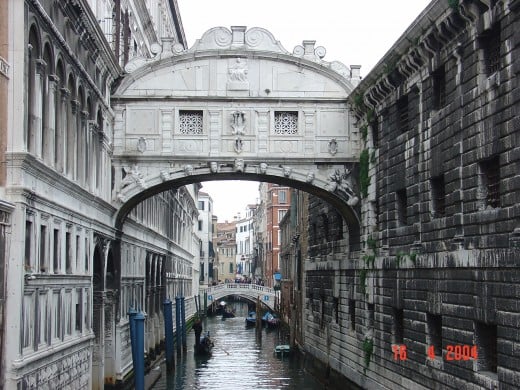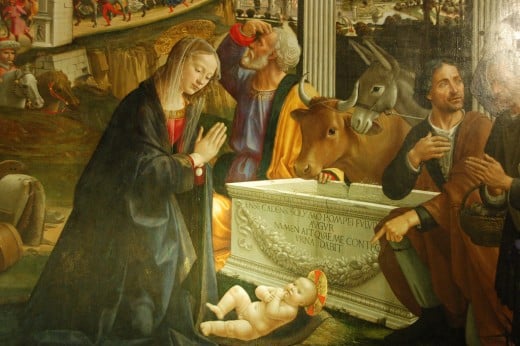Things You May Not Know About The Italian Renaissance
Italian Renaissance Architecture

Things You May Not Know About The Italian Renaissance
Italian Renaissance was a time period that fell between the Middle Ages to Modern Europe that allowed technology to flourish and culture to grow roots. Italy is often referred to as the birthplace to the great Renaissance, opening the nation's eyes to the natural world of Rome and Greece. Presenting things more naturally became a heavy emphasis and much more attention started to be given to shadow, light, contrasting shapes and above all, the human anatomy.
Leonardo da Vinci as well as Michelangelo, two of the greatest artists of all times came from the Italian Renaissance and their exquisite sculptures and paintings are considered by critics to be some of the most beautiful artistic examples of beauty ever created. Raphael's School of Athens was an impressionable artistic contribution and let us not forget the Sistine Chapel ceiling, Michelangelo's masterpiece. The Italian Renaissance period without a doubt delivered captivating pieces of art.
Italian Renaissance Art
The Significance Of Italy
Since the meaning behind Renaissance is rebirth, there are a few reasons why Italy impacted the era the way that it did. The Italian Renaissance broke free of cultural restraints and in doing so, unleashed innovations that had not been equaled elsewhere. The era shined brilliantly and passed along cultural heritage that has been essential to civilization.
The geographic location of Italy played a key role in this era. Italian's had abused and neglected their precious Roman heritage, stripping stone as well as marble from Roman buildings to make us of the materials in their own constructions. They eventually became aware in the later part of the Middle Ages that they were indeed surrounded by Roman civilization. Additionally, Italy was geographically in a position to have a great deal of contact with Arabs and Byzantines who had always preserved their classical culture. These two factors allowed Italy to absorb the Roman and Greek heritage.
The invention of the significant printing press allowed for new ideas to spread not only accurately but also very quickly. This became an important asset to the Italian Renaissance since most of the ideas were not being accepted by the church.
The vibrant economy and urban culture is what the Italian Renaissance thrived on. The freedom of expression allowed geniuses to flourish and begin to feed off of each others creative energy. The Italian cities, especially Venice with its vast banking and trading centers provided funds needed for patronizing the arts. The urban culture in Italy provided freedom of expression and the wealth needed to give birth to the Italian Renaissance.
The rebirth term of Renaissance, is valid due to the conscious focus on classical culture. Greek and Roman forms inspired architecture and writers used Roman and Greek examples to get across their point. Such authorities also played a huge role in Renaissance Science because it created Church rivals resulting in the Western Civilization to break away from medieval constraints, allowing the Science Revolution to be born.
Italian Renaissance Architecture

Continuing Thought Patterns From The Italian Renaissance
The Italian Renaissance was responsible for the birth of four important patterns of thought: humanism, individualism, secularism and skepticism.
Humanism allows for people to be the center of attention instead of God. Italian Renaissance portrayed the body of a human to be a representation of beauty. Philosophers from the era saw humans to be intelligent enough to be capable of reason instead of solely being pawns of God. Focus was directed away from God and the thoughts of Heaven and on to human beings.
Individualism really took humanism even further by allowing individual people to be responsible and recognized for great accomplishments. This freed remarkable geniuses to show their potential without having a medieval society to hold them back. Leonardo da Vinci is a prime example.
Secularism represented new political and economic opportunities that allowed people to become interested in the world. Art was primarily responsible for this showing accurate scenery, nature and anatomy that had previously been ignored.
Skepticism allowed for curiosity and often promoted questioning of authority. The Church's authority began to be questioned which led to Age of Exploration, Protestant Reformation and of course, the Scientific Revolution.
Italian Renaissance Art

Italian Renaissance Art
Art is the first thing most think of upon hearing the words Italian Renaissance. Art provided radical innovations and represented a break from the Middle Ages. Prior to this era, medieval art was created for God resulting in artists to design flat forms that lacked in detail. Faces and bodies had no individuality, portraying humans as cartoon-like and lacked in proportion, perspective and background details.
The Italian Renaissance brought paintings of portraits and other secular themes that were a direct contrast to medieval art. In the early 1300's, Giotto perfected individuality, proportion and background while Leonardo created such detail that plant species can be identified in his work.
There was a period known as High Renaissance that gave accurate representation with credible motion. Leonardo's painting of the Last Supper as well as Raphael's The School of Athens are prime examples.
Italian Renaissance architecture
Italian Renaissance Architecture
Architecture during this era broke with a medieval Gothic style and relied on domes, arches and columns such as Michelangelo's design of the dome found in St. Peter's, located in Rome. The architects of the Italian Renaissance based their theories on Classical Roman examples and it is characterized by mathematical proportion, harmonious form and the unit of measurement. Architects trained themselves as humanists to raise their profession to an artist rather than a laborer. The three key architects of this time were Andrea Palladio, Fillipo Brunelleschi and Alberti.
Italian Renaissance Literature
Poetry and literature evolved as the Renaissance continued to unfold. Poems were used as a way for writers to reveal deep feelings and a plethora of talent emerged from this era. Writings were greatly influenced by constant philosophical and scientific development. Christianity, scholarship and politics also had a strong impact. Niccolò Machiavellis's The Prince is a prime example of such influence.
The Italian Renaissance symbolizes a period of significant cultural change and European achievement over the period. It formed the history of art and gave birth to artistic geniuses who's vast majority of significant contributions has played a huge part in sculpting the world into what it is today.








